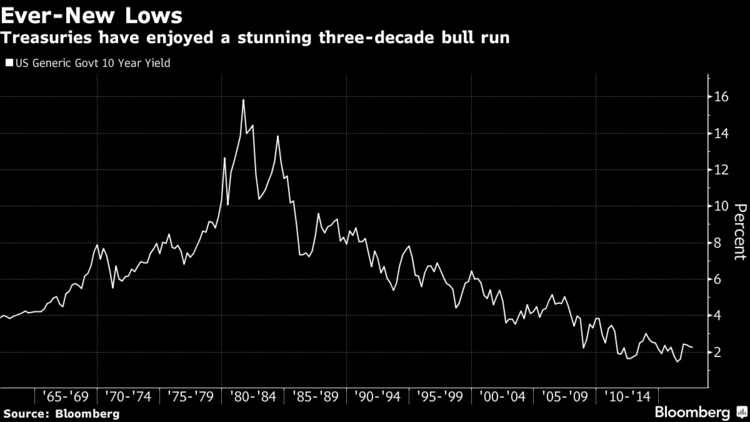Aging populations in China and Europe are poised to transform the global economy by sparking a jump in interest rates that may set the stage for a showdown between the old and the young.
So say Charles Goodhart and Manoj Pradhan, painting a sweeping picture of the future economic landscape in a new paper published by the Bank for International Settlements.
In it, the London School of Economics professor and former Morgan Stanley economist push back against the popular view that an aging population will slow growth and drag down rates. The research contrasts with models cited by the Federal Reserve, which project that inflation-adjusted real rates are intrinsically tied to potential growth.
“The demographic sweet spot is already behind us, and both the equilibrium real interest rate and inflation have probably already stopped falling,” write Goodhart and Pradhan. “Future problems may now intensify as the demographic structure worsens, growth slows, and there is little stomach for major inflation.”
A three-decade rush of new workers from Asia and other emerging markets has juiced returns for bond investors thanks to weak price growth, creating a sweet spot for capital owners that’s now reversing, the authors write.
But demographic trends are poised to be the driving force for the price of labor and capital across large economies and a graying population will in turn drain savings ratios and offset a corresponding reduction in investment spending, which tends to fall when demand is lower.
That dynamic should spur a rise in the effective cost of capital, or real rates, the authors reckon, pushing back against a view held by Fed researchers that real rates will stay low amid weak potential growth.
A key reason for Goodhart and Pradhan’s belief that workers will adjust their savings rates while still in the labor force, thereby anchoring rates, is their projection that a social-safety net will stay in place in advanced economies. That would reduce the incentive for workers to up their savings, and spur a rapid ‘dissaving’ upon retirement.

There’s no shortage of counterpoints to this view, including savers’ enduring need for ‘safe assets’ that boosts demand for highly-rated debt and caps yields. Meanwhile, the purchasing power of retired consumers isn’t guaranteed if the young begin to fight back, while technological innovations may reshape the landscape for productivity and rates.
The authors acknowledge some of these counterpoints but argue demographics are consistently more powerful than typical models project.








